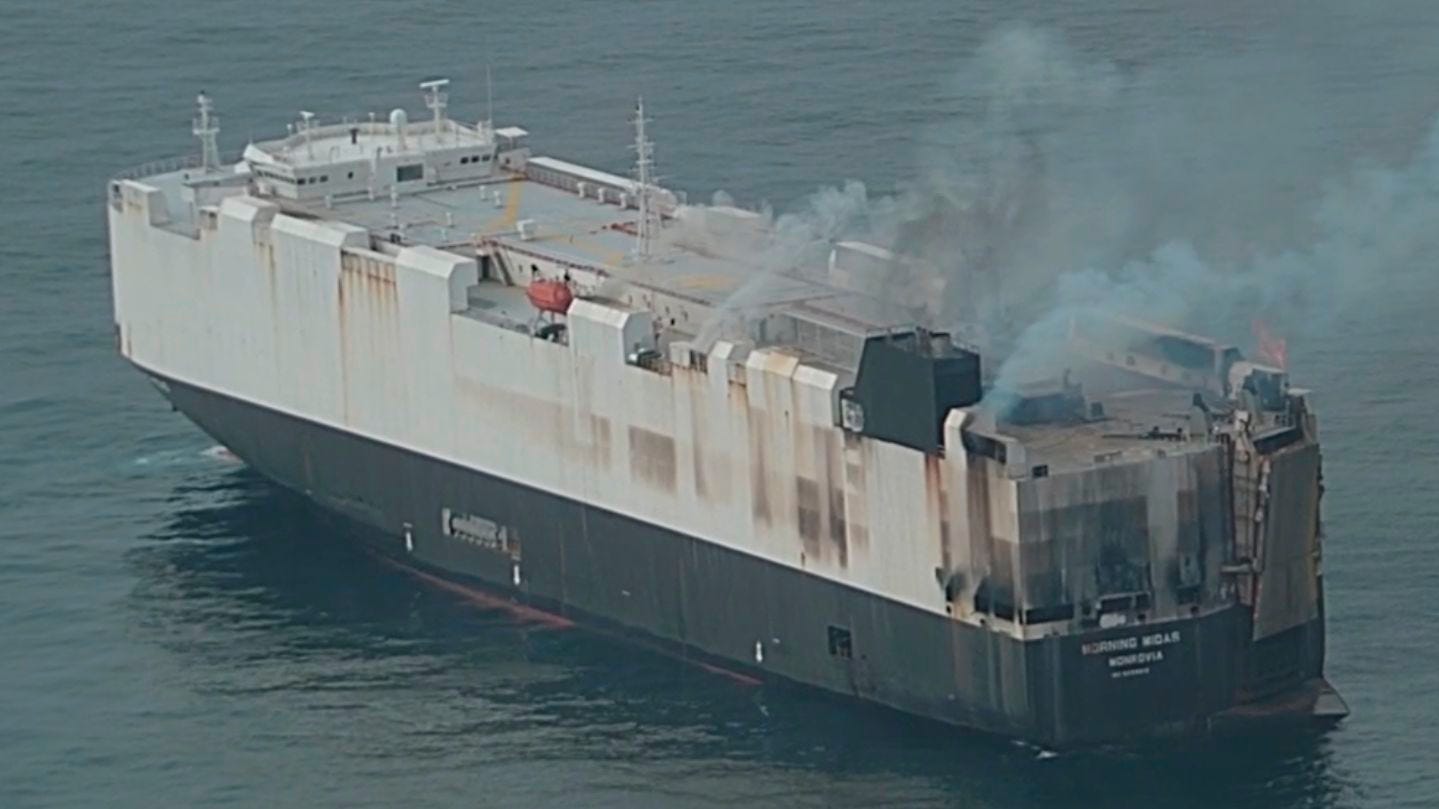WHAT THE EV. Part 5. Fire at Sea: How Battery Cargo is Rewriting Maritime Risk Jun 21, 2025
When the Ocean Burns
Three hundred miles south of Alaska, where no fire department can respond, the Morning Midas became a floating inferno. Smoke began pouring from cargo decks on June 3, 2025. The Liberia-flagged vessel carried approximately 3,000 vehicles, including 70 fully electric and 680 hybrid vehicles, bound for Mexico.
Within hours, all 22 crew members had abandoned ship. Hundreds of millions in cargo burned uncontrolled in the Pacific.
The fire lasted three weeks. When the ship finally sank on June 24, it took more than vehicles and cargo to the ocean floor. Gone too was any illusion that the electric vehicle revolution remained purely a land-based transformation. The ocean had become the latest theater in the EV transition's unintended consequences.
This investigation reveals how electric vehicles, marketed as environmental solutions, created new forms of maritime catastrophe. Battery chemistry that powers clean transportation becomes uncontrollable wildfire at sea. Supply chains optimized for cost efficiency ignored the physics of lithium-ion thermal runaway. The race to dominate EV exports transformed cargo ships into floating powder kegs.
The New Fire Season
Maritime fire incidents reached a decade high in 2024. Officials recorded 250 incidents, representing a 20% increase from the previous year. Container and cargo ships accounted for approximately 30% of these fires. What was once rare emergency has become routine maritime hazard.
This investigation traces power structures from Chinese factories to Congolese mines, from shipping fires to state surveillance systems. Subscribe for full access to research that mainstream coverage won't touch.


